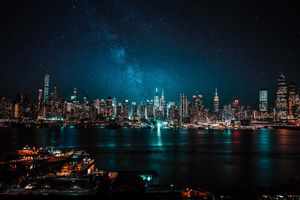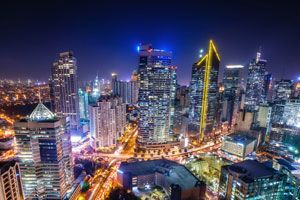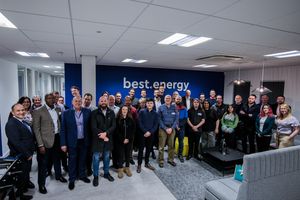What makes convenience stores the most energy intensive buildings in retail?
The retail sector is a bit of a giant. Operating all over the world, occupying a vast proportion of commercial buildings, and allowing the trade of pretty much everything.
Across the board, it’s a hefty industry in terms of intensive energy usage but some aspects of the sector are more notable than others. Food retail is the major culprit. You only have to think of your nearest big supermarket to comprehend the reasons why.
But within food retail, there’s actually another major consumer in terms of the intensity of energy use - and it’s not supermarkets.
This may come as a surprise; after all, in terms of building scale, convenience stores are far, far smaller units. But when you look into the actual energy usage of such buildings, things start to make a lot more sense.
Why are convenience stores so energy intensive?
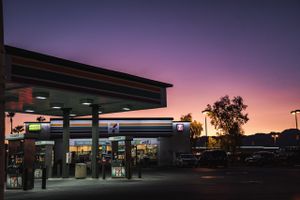
The key word of convenience stores is, of course, convenience. As such, one common aspect of these stores are their opening hours. The point of these outlets is to be available to customers when other food retail units are not. While these may operate from early in the morning to late in the evening, convenience stores often operate on a 24 hour basis.
This means that unlike other commercial buildings, everything is ‘always on’ - so while the buildings may be significantly smaller, they are constantly drawing energy for these facilities without any break in consumption.
Where’s that energy going?
For convenience stores, there are a few main culprits when it comes to energy consumption - and each is essential to the running of the store.
First of all, there’s refrigeration, an obvious necessity for any business storing chilled products. The fridge units in convenience stores are required to maintain specific cool temperatures; food products stored in refrigerators that exceed that temperature can’t legally be sold. Refrigeration units are kept on 24/7, so even if a store didn’t operate for 24 hours a day, they never stop requiring that same amount of energy.
Lighting is another major consumer. For other businesses, when it comes to lighting, one of the most obvious suggestions is to fix human error; a huge proportion of light waste can be avoided simply by adjusting lighting levels or turning them off during closing hours. But for a 24-hour store, this isn’t even an option. Convenience stores attract a vast amount of their custom outside of daylight hours and even during those, artificial lighting is required for optimum comfort and convenience. There simply isn’t the option to turn the lights off.
And speaking of comfort, there’s air conditioning to think about. Convenience stores and most other food retail outlets rely on air conditioning, essential for both their customers and employees, and this is all the more paramount in hotter countries around the world. Again, the nature of the business means that those facilities are operating for far longer and without the option of switching off.
Between these larger consumers, and other convenience store essentials - think coffee machines, hot food preparation and cabinets, and more - it’s easy to see why energy consumption, and energy bills, continue to grow.
But the cost of energy is constantly increasing… and the profit margins for convenience stores are typically slim. So what’s the solution?
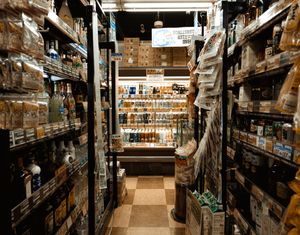
Monitoring is the first step to management
We know that the biggest consumers in convenience stores are typically refrigeration, lighting and air conditioning. But the fact is, we only know that because we’ve seen the data. Without that data, energy usage is largely invisible; one of the toughest jobs for energy managers all over the globe is the inability to physically see where all of their energy is actually going. After all, if you can’t see it, how do you save it?
This was precisely the case for 7-Eleven Malaysia, a project undertaken by Best.Energy partner Retes Energy. A franchisee operating more than 616 stores with 24/7 opening hours across Malaysia and further beyond, they weren’t aware of exactly where their excess energy waste was going. At least, not until the installation of Eniscope.
Eniscope: cutting-edge technology for full-scale energy management
*Eniscope *is our cutting-edge solution to a multi-industry problem, and is the world’s most comprehensive energy monitoring and management system. It provides real time reliable data on exactly where your energy is going, across your entire building portfolio, and no matter how large that portfolio might be. It reports on your use of electricity, water, gas, temperature, occupancy, and more. It can be viewed remotely from wherever you are in the world, at any moment in time.
With management comes lasting solutions and big savings
Once you know where that energy is going, you can start to save it.
To go back to our real-world example; once Eniscope had marked the main consumers for 7-Eleven Malaysia, Retes Energy was able to work on implementing real solutions. In this case, that was other tech from the Best.Energy catalogue. ACES 2 - a cutting edge product allowing the energy manager to control the air conditioning system remotely using logic-based scheduling. And Voltage Optimisation, a product designed to drop the voltage supplied to the building so that the devices inside only receive the precise amount needed to operate, subsequently reducing leftover energy which would be wasted.
Over the course of this six-year project, 7-Eleven saved over 17.7 million kWh and 10,000 tons of CO2 - the equivalent of 2,425 houses, and translating into financial savings of $8.4 million.
But none of those savings could have been feasible had Eniscope not identified those key areas of wastage.
The power of data
Data plays a pivotal role in energy efficiency, and it’s paramount for real, long-term solutions. Now, the Best.Energy portfolio is growing with the Eniscope Air Suite. Harnessing the power of IOT and AI, this full suite of products offers the ability to monitor, manage, and create smart buildings… no matter the number, whether it’s in the dozens or thousands.
Reduce energy costs across the board by gathering precise data; tackle the problem of ‘always on’ equipment with logic-based scheduling, and remote controlling from the energy manager; prevent equipment failures before they have the chance to cause in-store disruption, with real-time data available from each and every site in your building portfolio. These are just some of the ways that Eniscope Air Suite can revolutionise the running of convenience stores, world-wide.
As the climate crisis continues to grow and energy costs spike, energy efficiency is the only viable, long-term solution. And with mounting pressure across every industry around the world for companies to promote a green initiative, businesses who don’t step up risk being left behind. Even convenience stores.
Convenience stores are the most energy intensive buildings in the global retail sector. But they don’t have to be. Through valuable data gleaned from powerful monitoring systems, energy management - and reduction - is possible through upgraded equipment, better technology, and most importantly, improved insight.

